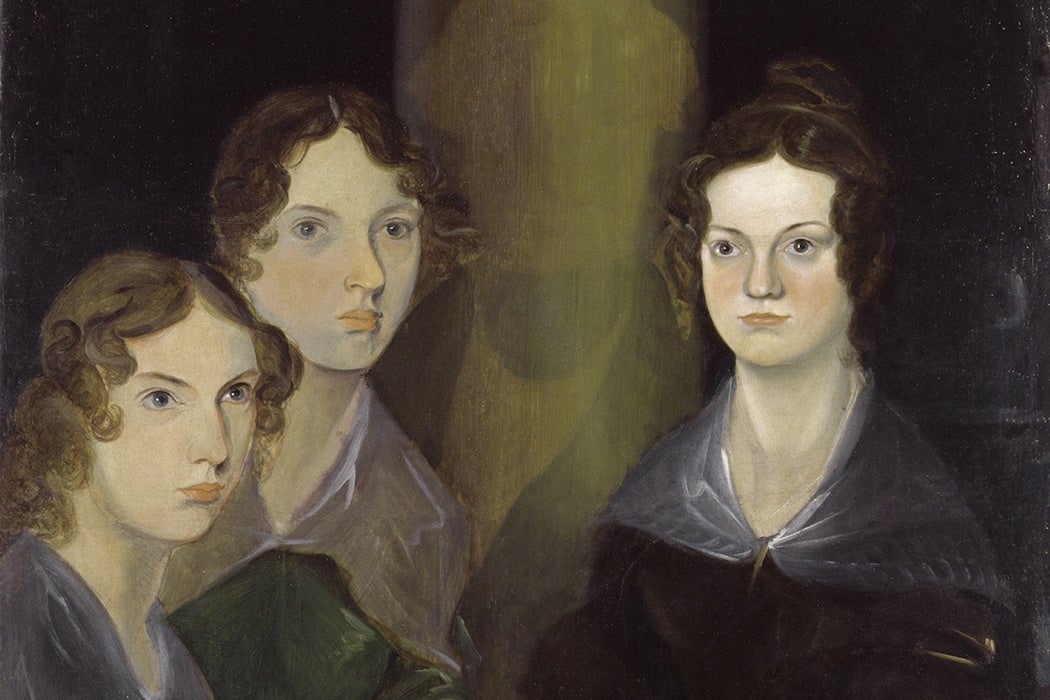This summer marks the 200th anniversary of the birth of Branwell Brontë—you know, the not-famous one. There he isn’t in his own painting of the surviving Brontë children, Charlotte, Emily, and Anne (two other sisters died before their teens). He painted over himself—sort of. The result is ghostly, a perfect Gothic touch for the Brontë mythos and the ne’er-do-well Branwell.
Charlotte, Emily, and Anne get all the attention, quite justifiably, because of their vivid poetry and fiction. But what attention! Katherine Frank points out that no literary family has been as written about as the Brontës. (Father Patrick was born in Ireland with the family name “Brunty” or maybe “Prunty” and changed the spelling and added a dieresis as he made himself a Yorkshire curate.)
“More than forty lives of the Brontë family have been written since Mrs. Gaskell’s 1857 biography of Charlotte,” Frank notes, and more have been written since she wrote her article. Many of these bios have recycled Gaskell’s original confabulations, turning the family story into a mythic series of Gothic set-pieces. And, as Frank explains, many of the biographers following Gaskell have been novelists, eager to wuther about in the moorlands of romance and Romanticism, also known as the “Purple Heather School” of Brontë biography. One of these was Daphne Du Maurier’s The Infernal World of Branwell Brontë, in which Gaskell’s fables of the Byronic Branwell were given a lush treatment.
Branwell, like his sisters, was raised to be talented, but he had a hard time of it. He wrote and painted but couldn’t hold down a job. He was addicted to alcohol and laudanum, pined for a married woman (or maybe not; biographers disagree), and passed away at the age of 31 from tuberculosis. Some say he died standing upright, because that was the way he wanted to go—but that’s also debated.
More than a century ago, Henry James was already complaining that the genius of the Brontë sisters’ books was lost in the obsession with their lives, or, more specifically, the interpretation of their lives. The family still gets more fetishistic attention than the works, so no wonder Branwell lives on. Branwell was even credited by some with writing Emily’s Wuthering Heights (1847), since the book could not have been “conceived by a timid and retiring female.” (In light of such thinking, it should be recalled that the sisters initially published under male pseudonyms—Currer, Ellis, and Acton Bell—to be taken seriously.)
Of course, lives are hard to turn into narratives. Perhaps this is why Brontë biography has lurched between the scholarly and the lurid. The Brontës “wrote too little, lived too unhappily, and died too soon,” Frank says, so their biographers write “acts of resuscitation,” moved by “an underlying impulse of restoration” to make “their subjects live once again on their pages.” The underlying spirit is a protest against a story that “possesses an inherent tragic simplicity and unity, but it sorely lacks a cathartic resolution.”







